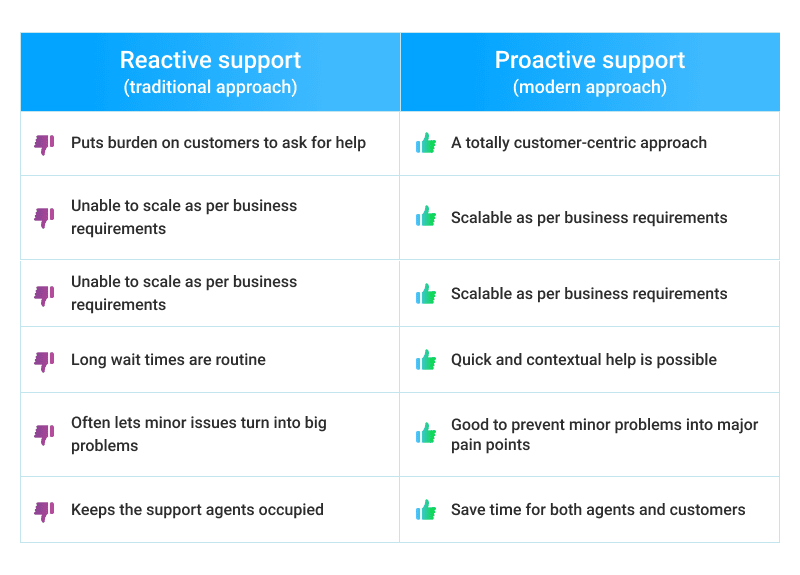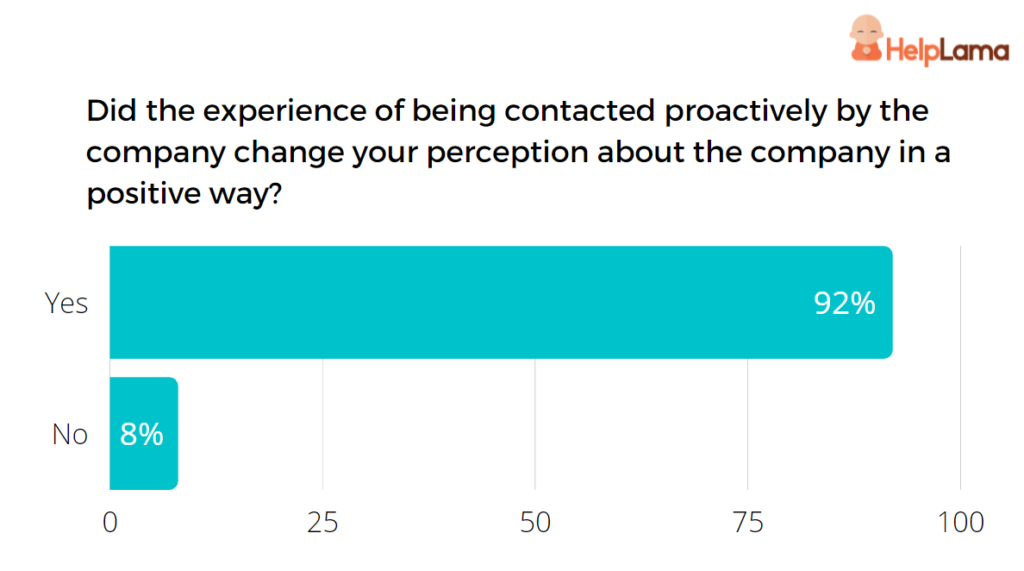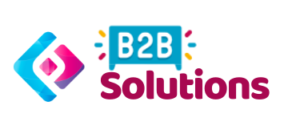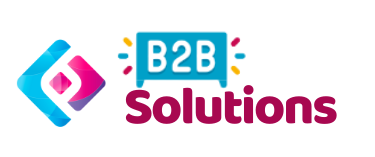The Future of Customer Support: 10 Strategies to Move from Reactive to Proactive
Introduction
The Evolving Role of Customer Support: Embracing Proactive Service
Customer service is no longer just about reacting to problems after they happen. Today’s customers—more informed and empowered than ever—expect fast, personalized, and even predictive support. This shift is driving the rise of proactive customer support, an approach that anticipates issues before they arise and delivers solutions in advance.
Adopting a proactive strategy brings measurable benefits for both businesses and their customers:
✅ For Businesses:
- Higher Customer Satisfaction & Loyalty: Proactively resolving issues prevents frustration and builds stronger, long-term relationships. Happy customers are more likely to stay—and advocate—for your brand.
- Increased Revenue Opportunities: Satisfied customers are more likely to make repeat purchases, boosting both sales and customer lifetime value.
- Improved Operational Efficiency: Preventing problems before they escalate reduces the need for urgent, reactive responses—saving time, money, and support resources.
✅ For Customers:
- A Seamless and Personalized Experience: Customers feel valued when their needs are anticipated. Proactive support enhances trust and creates a more enjoyable journey.
- Faster Resolution Times: Many issues can be avoided entirely, but when they do occur, early detection and intervention make for quicker, smoother resolutions.
In this article, you’ll discover 10 powerful strategies to help your business move from reactive to proactive support—ensuring a better experience for your customers and stronger results for your team.

😤The Problem with Reactive Support
🚨 The Drawbacks of Reactive Support: Stuck in Firefighting Mode
Reactive customer support follows a traditional model: teams wait for customers to report issues before stepping in. It’s like playing firefighter—constantly rushing to put out fires after they’ve already started.
While it may seem manageable on the surface, this approach comes with serious limitations:
😤 Customer Frustration Builds Quickly
When customers have to reach out for help—often facing long wait times, repeated explanations, and delayed resolutions—it leads to a frustrating experience. Over time, this erodes trust and damages brand perception.
⚙️ Operational Inefficiencies for Businesses
Reactive support forces teams into a constant state of crisis management. This results in wasted resources, higher support costs, and band-aid solutions that don’t address the root cause—often leading to repeat issues.
🚩 Risk to Your Brand Reputation
Unhappy customers don’t stay silent. Repeated negative experiences can turn them into outspoken critics, spreading dissatisfaction through reviews and word-of-mouth—hurting your brand image.
🔍 Real-World Example: The Streaming Service Scenario
Imagine you’re using a popular music streaming app. One day, it stops working on your phone. You contact support, wait on hold, explain the issue from scratch, and still don’t get an immediate fix. Eventually, it gets escalated—adding more delay and more frustration.
This reactive approach fails to meet modern expectations.
✅ What Proactive Support Could’ve Done Instead
With a proactive support model, the streaming service could have monitored app performance, detected the issue early, and either alerted users in advance or automatically rolled out a fix—before you even noticed a problem. That’s the kind of seamless experience today’s customers expect.

🚀 The Power of Proactive Support
🔎 Proactive Support: A Shift Towards Anticipation
Proactive support is a forward-thinking customer service approach. Rather than waiting for problems to arise, it focuses on anticipating customer needs and addressing them before they escalate. This approach revolves around understanding your customers deeply—identifying common pain points and taking action in advance to create a seamless experience.
😊 Increased Customer Satisfaction & Loyalty
One of the biggest advantages of proactive support is the increase in customer satisfaction and loyalty. By resolving issues before they impact users, you create a smoother and more reassuring experience. Customers feel valued and supported, which strengthens their connection to your brand and encourages long-term loyalty. They’re more likely to stay and even advocate for your business.
📉 Reduced Workload for Support Teams
Proactive support also benefits internal teams by reducing the overall workload. When common issues are prevented through early intervention, fewer tickets make their way to the support team. This allows agents to focus their energy on complex or high-stakes situations that require empathy, personalization, and human touch.
🌟 Improved Brand Reputation
Additionally, it enhances brand reputation. When customers see that your business is invested in preventing problems—not just fixing them—it sends a powerful message about your commitment to their success. This effort doesn’t go unnoticed and often leads to positive word-of-mouth, helping establish your brand as one that truly cares about its customers.
💡 Real-Life Example: Proactive Banking Alert
Consider this real-world example: you bank online and suddenly receive a notification about a suspicious login attempt from an unfamiliar location. Before you can even react, the bank freezes your account and contacts you to verify the activity. This proactive action prevents potential fraud and builds trust. You feel secure, protected, and confident in the service—exactly what proactive support is designed to achieve.
“Exceptional customer service proactively manages your brand and reactively can turn upset customers into raving fans based on how you handled their complaint.” ― Amber Hurdle
🧭 10 Strategies for Moving to Proactive Support
In today’s B2B landscape, businesses are shifting from merely reacting to problems to anticipating customer needs before issues arise. With the help of modern tools, data-driven insights, and a customer-first mindset, support teams are no longer just problem-solvers—they’re becoming proactive partners in the customer journey.
There’s a well-known quote by Abraham Lincoln: “The best way to predict your future is to create it.” That perfectly captures the essence of proactive support. Instead of waiting for problems to surface, companies are using strategic foresight to identify potential issues early and resolve them before they impact the customer.
This transformation isn’t just about technology—it’s about changing the way support teams think and operate. From leveraging AI to monitoring usage patterns and providing self-service options, here are 10 smart strategies to help your business evolve from reactive to proactive support.
📊 1. Leverage Data and Analytics to Predict Customer Needs
At the heart of proactive support lies the strategic use of data and analytics. These tools are essential for identifying potential customer issues before they escalate into larger problems. It starts with collecting data from various touchpoints—support tickets, website behavior, app usage patterns, and even social media mentions. This gives businesses a detailed understanding of the customer journey.
Once the data is gathered, analytics tools come into play, revealing patterns and trends. This might include spotting spikes in customer complaints after a product update, recurring issues mentioned online, or detecting irregular user behavior within your app. These insights help businesses anticipate where problems are likely to occur.
By tapping into predictive analytics, support teams can proactively address concerns. For instance, if past updates have led to a flood of tickets, you can now act early by sending out troubleshooting tips, helpful guides, or even updates that fix issues before users notice them.
This data-driven approach unlocks major benefits. Early intervention prevents widespread issues, while personalized outreach shows customers you understand their needs. And since solving problems early is often cheaper than managing a flood of complaints later, it’s a cost-effective win as well. In short, data and analytics act as your support team’s crystal ball—enabling you to forecast challenges and create a smoother, more satisfying customer experience.
❤️ 2. Customer Health Scoring: Monitoring Satisfaction in Real-Time
Think of customer health scoring as a vital signs monitor for your business relationships. It’s a smart, proactive way to measure the wellbeing of each customer account—providing insight into their satisfaction levels and helping predict the risk of churn before it happens. This system works by evaluating a set of carefully selected metrics that reflect how engaged and satisfied your customers are.
These metrics can include things like product usage frequency, how often they contact support, customer feedback from surveys or social media, renewal patterns, and the extent to which they use the services or features available in their contract. Each of these data points is assigned a weight based on how strongly it correlates with customer retention or satisfaction. Together, they are used to calculate a single health score for every account.
This score serves as an early warning system. High scores usually indicate happy, engaged customers, while lower scores may signal dissatisfaction or a risk of churn. With this kind of visibility, your team can take targeted, proactive steps—such as offering personalized outreach or solutions—before the relationship deteriorates.
Customer health scoring also helps prioritize support efforts. By identifying high-risk accounts, you can direct attention where it’s needed most, preventing potential losses and deepening customer trust. Ultimately, it’s a powerful tool to keep customers thriving and loyal, building stronger, longer-lasting relationships that fuel business growth.
📚 3. Empower Customers with Self-Service Solutions
Imagine giving your customers instant access to a library of answers and helpful resources—available anytime, anywhere. That’s exactly what self-service tools like FAQs, knowledge bases, and how-to guides offer. These resources are a cornerstone of proactive customer support, helping customers find solutions quickly without needing to contact your support team.
By enabling customers to help themselves, self-service dramatically reduces the volume of incoming support requests. This allows your support agents to focus on more complex and high-value interactions. It also significantly speeds up resolution times, as customers don’t need to wait in line for assistance—they can get what they need with just a few clicks. Plus, self-service is always available, providing 24/7 support across time zones and beyond regular business hours.
Beyond troubleshooting, a well-maintained knowledge base serves as an educational hub. Customers can explore product features, learn best practices, and deepen their understanding of your offerings—all of which enhance engagement and reduce dependency on support.
Examples of self-service tools include organized FAQ sections with concise answers, searchable knowledge base articles and tutorials, video walkthroughs for visual learners, and community forums where users help each other by sharing experiences and solutions. The key is to ensure your self-service platform is intuitive, up-to-date, and easy to navigate. By doing so, you empower your customers to resolve issues independently, reduce strain on your support team, and create a more proactive and scalable support experience.
💡 4. Guide Users Seamlessly with In-App Messaging & Tutorials
Imagine a helpful guide appearing within your app right when a user needs it—offering tips, tutorials, or support without them needing to ask. That’s the power of in-app messaging and tutorials. These tools allow you to proactively support users in real time, smoothing out the user journey and minimizing confusion before it becomes a problem.
Unlike traditional manuals or external help docs, in-app messages are triggered by user behavior and delivered at just the right moment. Whether it’s a quick tip when a new feature is accessed or a step-by-step walkthrough during onboarding, this contextual guidance ensures users get exactly what they need, when they need it—without leaving your app.
This proactive guidance plays a major role in improving feature adoption, too. Many users never discover the full potential of an app. In-app messaging can spotlight hidden features, introduce updates, and nudge users toward actions that enhance their experience. As a result, users are more engaged and your support team sees fewer tickets related to basic usability issues.
Real-world examples of in-app guidance include welcome messages that onboard users, contextual tips that explain tools as users interact with them, interactive tutorials for complex workflows, and feature highlights that draw attention to underused capabilities. Even progress tracking tools that show users how far they’ve come can drive motivation and engagement.
The key is balance—these messages should feel helpful, not intrusive. With a smart understanding of your users’ behaviors and pain points, you can tailor messages that guide without overwhelming. Done right, in-app messaging transforms your product into a proactive support channel that keeps users informed, confident, and coming back for more.
🤖 5. AI-Powered Chatbots: Your Always-On Proactive Support Partners
Imagine having a tireless assistant that’s always online, ready to answer questions, solve problems, and engage users before they even think to ask. That’s exactly what AI-powered support bots bring to the table. These conversational companions use artificial intelligence to deliver proactive, real-time assistance—boosting support efficiency while enhancing the customer experience.
Unlike human agents who work in shifts, chatbots are available 24/7. Whether it’s the middle of the night or a weekend, customers can get instant responses to common queries, leading to faster resolutions and greater satisfaction. But chatbots don’t just wait around—they’re designed to engage proactively. For example, a bot can welcome new visitors to your site, offer assistance during a tricky checkout step, or even check in with existing users who seem stuck based on their behavior.
These bots also personalize the interaction. By tapping into previous conversations or user data, they can offer more tailored responses that actually feel relevant—no more generic or robotic replies. Plus, they’re great at handling the repetitive stuff: resetting passwords, tracking orders, or explaining basic features. This automation frees up human support teams to dive into more complex or emotional issues where empathy and nuance matter most.
The benefits are clear—faster help leads to happier customers, and automated responses cut down on support costs. Plus, every chatbot interaction generates data, giving you insights into what customers are asking and where they’re getting stuck, so you can refine your proactive strategy over time.
Still, the success of AI chatbots hinges on how smart and human they feel. Natural language processing is key—they should understand real customer language and respond naturally. They also need strong intent recognition so they can grasp what a user is really asking. And when a question’s too complex, there should be a seamless transition to a human agent—no dead ends or frustrating loops.
Used well, AI-powered chatbots aren’t just support tools—they’re strategic assets that proactively guide users, reduce friction, and elevate the overall customer experience.
🧠 6. Empower Your Team: Training for Proactive Problem-Solving & Communication
No proactive support strategy can succeed without a well-prepared team behind it. Your customer service representatives are the front line of your brand, and equipping them with the right skills can make the difference between simply reacting to issues and truly anticipating customer needs. That’s why investing in employee training focused on proactive problem-solving and strong communication is a game-changer.
With the right training, your team can learn to spot early warning signs before they become full-blown problems. Whether it’s a subtle shift in customer sentiment, a sudden spike in support tickets, or a pattern in product feedback, trained reps can take action early—saving time, money, and customer frustration. It’s about going deeper than surface-level solutions. Training in root cause analysis empowers your team to fix problems at the source, creating a smoother and more reliable customer experience.
Communication is just as critical. Proactive support often involves reaching out to customers before they even realize there’s a problem. In these moments, clarity, empathy, and timing matter. Training helps your team deliver helpful, personalized messages that reassure customers and make them feel seen and supported. And when reps consistently solve issues before they escalate, it builds trust—turning one-time users into loyal brand advocates.
This kind of training can cover several key areas. Data analysis skills help reps understand and act on customer behavior trends. Problem-solving frameworks guide them through structured, effective troubleshooting. Communication skills training enhances empathy, listening, and clarity. And ongoing education about your industry ensures your team stays one step ahead of evolving customer expectations.
Investing in your team is an investment in long-term success. When your employees are confident, capable, and proactive, they create exceptional experiences that set your brand apart—and keep customers coming back for more.
📣 7. Tune In to the Buzz: Monitor Social Media & Reviews for Proactive Insights
In today’s connected world, platforms like social media and online review sites have become digital megaphones for customer feedback. These channels are where your customers talk candidly—sharing praise, frustrations, and everything in between. By actively listening, you gain real-time insights into what your customers are experiencing, allowing you to step in proactively before issues spiral out of control.
Often, the earliest signs of trouble show up in a tweet, a Facebook comment, or a less-than-stellar review. Customers might call out recurring bugs, confusing features, or gaps in service—things that haven’t made it to your support team yet. By monitoring these platforms, you can detect patterns and address the root cause early, before a ripple becomes a wave.
It’s not just about identifying problems—social media and reviews also provide a pulse check on how customers feel about your brand. Analyzing this sentiment helps you prioritize improvements and shape proactive strategies that genuinely resonate with your audience. Whether it’s refining a feature, updating documentation, or clarifying messaging, the insight gained here can shape smarter, more customer-centric decisions.
And when issues are raised in public, your response is everything. Jumping in with a timely, helpful, and human reply shows you care. Acknowledging a concern publicly—and outlining how you plan to resolve it—not only helps that one customer but sends a message to others watching: you’re a brand that listens and takes action.
There’s another win here: relationship-building. Engaging customers through comments, replies, or even shoutouts helps foster a stronger sense of community. People want to feel heard and valued, and proactive engagement can turn passive users into vocal advocates.
To make this work efficiently, you’ll need the right tools. Social listening platforms can help you track brand mentions, product discussions, and keywords across multiple channels. Review management tools streamline the process of responding to feedback on sites like Google, Trustpilot, or G2. And having a dedicated team or individual responsible for social listening ensures nothing slips through the cracks.
In short, your customers are talking—you just need to listen. By tuning in to social media and reviews, you gain a powerful lens into the customer experience and an opportunity to act before small frustrations become big problems. It’s a modern, proactive approach that keeps your brand connected, responsive, and ahead of the curve.

🛠️ 8. Stay Ahead: Offer Proactive Maintenance & Customer Check-Ins
Traditional customer support often waits for a red flag—an error, a complaint, or a service failure—before jumping into action. But proactive support flips that script. By offering proactive maintenance and routine check-ins, you’re not just solving problems—you’re preventing them altogether. It’s like giving your customers a smoother ride by clearing the bumps before they even hit the road.
Proactive maintenance is all about foresight. Rather than waiting for things to break, you take action to keep everything running smoothly. For software companies, this means regular updates that squash bugs, tighten security, and introduce new features. If you offer physical products or machinery, scheduled inspections or predictive maintenance—powered by usage analytics—can detect wear-and-tear before it leads to failure. This minimizes disruption and keeps your customers up and running.
On the other hand, proactive check-ins bring the human element into the mix. Reaching out to customers before they reach out to you shows you’re not just there to put out fires—you’re invested in their success. A welcome call after onboarding helps reinforce a smooth start, while regular follow-ups show ongoing commitment. Even better, use data triggers to check in with customers based on their behavior—like when someone hasn’t used a key feature in a while or recently hit a usage milestone. That small gesture can uncover hidden issues and spark meaningful conversations.
The benefits? They’re big. Reduced downtime means fewer headaches for your customers. Early detection means problems don’t snowball. And when you show up before you’re asked, customers feel seen, valued, and supported—leading to stronger loyalty and more positive word-of-mouth. Plus, every check-in is a chance to gather feedback and stay aligned with what your customers actually need.
To make proactive maintenance and check-ins work, start by creating a maintenance schedule that tackles known pain points. Use customer data to segment and prioritize check-in outreach, and choose the best channels—whether it’s a quick email, a phone call, or an in-app message. Most importantly, personalize every interaction. Customers can tell when it’s just a template. Tailoring your message to their journey shows you’re paying attention.
When you proactively maintain what you’ve built and reach out before issues arise, you’re not just supporting customers—you’re empowering them. And in doing so, you lay the groundwork for long-term relationships, greater trust, and a customer experience that feels more like a partnership than a transaction.

📣 9. Proactive Outreach Programs: Strengthen Relationships Before Issues Arise
Proactive outreach isn’t just about fixing problems—it’s about preventing them, deepening customer connections, and delivering value before it’s even asked for. When done right, proactive outreach transforms your customer support team from a reactive helpdesk into a trusted advisor.
At its core, proactive outreach means reaching out before the customer runs into trouble. It’s checking in to say, “We’ve got your back,” rather than waiting for the support ticket. Whether it’s a friendly welcome email, a check-in based on usage patterns, or a heads-up about a helpful new feature, these touchpoints show customers that you’re invested in their success—not just when things go wrong, but all the time.
How does this drive impact?
✅ Stronger Customer Relationships
When customers hear from you outside of a problem, it creates a more personal and trustworthy relationship. You become more than just a service provider—you become a partner in their success.
✅ Smarter Education & Empowerment
Tailor content, tips, and resources based on how customers are using your product. If a user hasn’t tapped into a powerful feature yet, guide them to it. If there’s a new tool or update, show them how it benefits them. This reduces dependency on support teams while maximizing product value.
✅ Early Problem Detection
Sometimes customers don’t speak up—but they’ll gladly respond to a well-timed email or survey. Outreach gives you a chance to uncover hidden issues early and solve them before they spiral into churn.
✅ Boosted Engagement
Regular, helpful communication keeps your product top of mind and makes customers feel valued. Whether you’re sharing updates, celebrating milestones, or reminding them of renewal dates, every message is a touchpoint that deepens loyalty.
✨ Examples of Proactive Outreach Programs:
- Welcome Series: Onboarding doesn’t stop after the first login. Send a friendly email sequence packed with tips, tutorials, and encouragement to help new users succeed.
- Behavior-Triggered Outreach: If someone’s dropped off from a feature or hit a usage milestone, send personalized help or encouragement.
- Customer Satisfaction Surveys: Don’t just collect feedback—use it. Reach out when satisfaction drops, and thank customers who give high scores with appreciation or exclusive content.
- Educational Content Drops: Regularly share valuable articles, videos, or live webinars to help customers become power users.
- Renewal Reminders: Don’t wait for customers to forget—get ahead of renewals with timely, helpful reminders.
📊 Best Practices for a Successful Outreach Program:
- Segment Thoughtfully: One-size-fits-all doesn’t work. Group customers by behavior, stage, or industry to make your messaging relevant.
- Choose the Right Channel: Email might be perfect for one customer, while another might respond better to a phone call or in-app message.
- Lead with Value: Outreach should always aim to help, not just sell. If every message feels like a sales pitch, customers will tune out.
- Measure and Adjust: Track engagement, satisfaction, and response rates to refine your strategy and stay aligned with customer needs.
💬 10. Encourage Customer Feedback and Use It to Refine Proactive Strategies
Customer feedback isn’t just useful—it’s essential. If your proactive support efforts are the engine driving customer success, then feedback is the fuel that keeps it moving in the right direction. When you create clear, accessible channels for feedback and actually act on what customers share, you unlock a powerful tool for continuous improvement.
Why is customer feedback vital to proactive support?
✅ Direct Insights from the Source
No one knows the customer experience better than the customer themselves. Their feedback can uncover usability issues, friction points, and unmet needs that internal teams may overlook.
✅ Spotting the Unexpected
Even the most well-thought-out proactive strategy can’t predict everything. Feedback acts as your radar, detecting new problems before they escalate—allowing you to respond with timely fixes or educational resources.
✅ Strategic Focus
Proactive efforts should be focused where they matter most. Feedback helps you prioritize the features, services, or support areas that customers care about most, ensuring your efforts have the greatest impact.
🛠️ Ways to Collect and Use Customer Feedback Effectively:
- 🧰 Offer Multiple Feedback Channels
Don’t rely on a single method. Make it easy for customers to share thoughts via in-app forms, post-interaction surveys, email, social media, or even chatbot prompts. - 📣 Be Proactive in Asking
A well-timed nudge can go a long way. Ask for feedback after onboarding, product updates, support interactions, or feature launches—just avoid overwhelming users with too many requests. - 🎁 Show Appreciation
Whether it’s a thank-you message, a shoutout, or a small incentive (like a discount or loyalty points), show customers that their input is valued and welcomed. - 📊 Analyze and Categorize
Implement systems to gather, tag, and review feedback regularly. Look for patterns, prioritize high-impact themes, and create internal reports that fuel decision-making. - 🔁 Close the Loop
When you make improvements based on customer suggestions, tell them. A simple “You spoke, we listened” message builds trust and demonstrates your commitment to continuous improvement.
✨ Real-World Applications of Feedback in Proactive Support:
- Confusing Feature?
If users consistently report difficulty with a new feature, develop a quick tutorial video or trigger an in-app tooltip to provide guidance right when they need it. - Common Support Issue?
If a support trend keeps popping up, automate the solution or preempt it with proactive outreach, like a tips email or knowledge base update. - Navigational Frustration?
If users say your help center is hard to navigate, restructure the layout, add a smart search bar, or highlight top articles to reduce friction.
🧠 Build a Feedback-Driven Culture
Creating a culture of feedback isn’t just about collecting comments—it’s about listening, learning, and evolving. Your proactive support strategy should be a living, breathing effort that constantly adapts to customer needs. With the right feedback systems in place, your team can stay ahead of issues, refine user experiences, and keep customers happy and engaged.
✅ Conclusion: The Power of Proactive Support
In today’s fast-paced, customer-centric world, proactive support is no longer a luxury—it’s a necessity. Rather than waiting for issues to arise, businesses that embrace proactive strategies can prevent problems, delight customers, and build lasting relationships.
By investing in tools, people, and processes that anticipate customer needs, you transform your support function from a reactive fix-it team into a proactive partner in customer success.
Here’s what it all adds up to:
✨ Happier customers who feel heard and valued
⚙️ More efficient support teams focused on meaningful work
📈 Stronger customer loyalty and brand reputation
💡 Continuous improvement through feedback and insights
🖼️ Visual Checklist: 10 Proven Proactive Support Strategies

The best support isn’t just about solving problems—it’s about preventing them and helping customers succeed before they even ask for help. When proactive support becomes part of your company culture, you don’t just meet expectations—you exceed them.
🎯 Take Your Support to the Next Level with Supportbench
Deliver Proactive, Personalized, and Scalable Customer Experiences
🧠 AI-Powered Automation
Trigger workflows and alerts based on real-time customer behavior.
📚 Dynamic Knowledge Base
Smart, searchable help content that evolves with your customers.
💬 In-App Messaging & Surveys
Provide real-time, contextual support and gather instant feedback.
📊 Customer Health Scoring
Spot issues early with customizable satisfaction indicators.
📈 Advanced Reporting
Unlock insights into trends, performance, and support impact.
🤖 Smart Ticket Routing
Automatically route tickets to the right team at the right time.
The Future of CX is AI-Powered Customer Support
Struggling with slow responses & high costs? AI-driven CX delivers 24/7 instant support, reduces expenses & improves customer satisfaction…
AI in Customer Support: Top 10 Companies Delivering Next-Gen Service
Discover the top 10 AI customer support companies of 2025 delivering next-gen service, automation, and personalized customer experiences….
AI Customer Support Is Key to Future Revenue
Discover how AI powered customer support boosts revenue with 24/7 service, personalization, and efficiency-transforming customer experience and business growth….
10 Proven Keyword Research Strategies for Higher Google Rankings
Master 10 proven keyword research strategies for higher Google rankings in 2025. Discover tools, competitor analysis, and low-competition keyword tactics…
AI Driven Customer Support: 25 Statistics Every Business Should Know
Unlock 25 key statistics on AI driven customer support and discover how AI is reshaping customer experience, efficiency, and business…
AI Self-Service Solutions: Shaping the Future of Customer Support
Transform customer support with AI self-service solutions. Deliver 24/7 assistance, reduce costs, and boost satisfaction using AI-powered automation and chatbots….









Pingback: AI Driven Customer Support: 25 Statistics Every Business Should Know - B2B Solutions
Pingback: The Future of Revenue Lies in AI Powered Customer Support - B2B Solutions